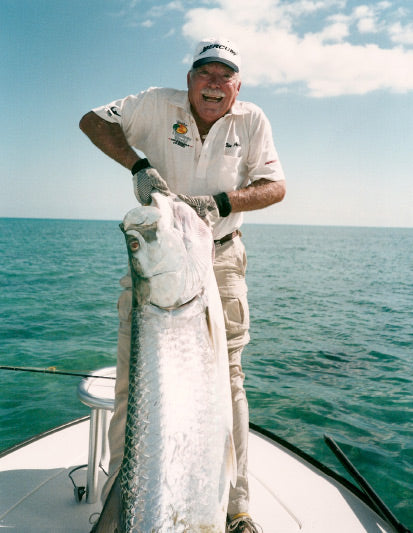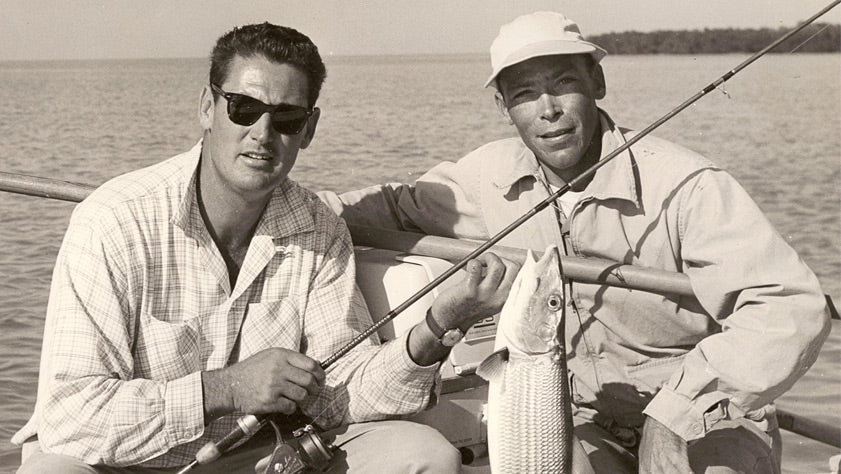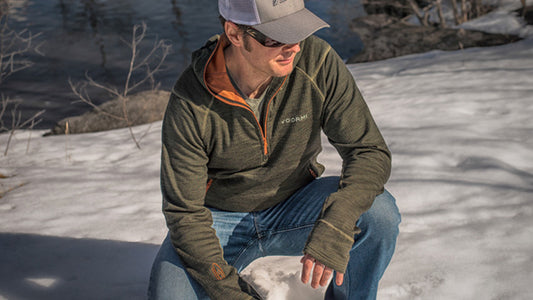If you have ever considered fly fishing flats for tarpon, bonefish and or permit, you should understand that it does require a certain skill level and using your tackle that is not necessary for other types of fishing. Therefore, it is reasonable to assume that the beginner to saltwater fly fishing should spend quite a bit of time practicing their casting before attempting to fish the “flats”.
The length of time you take placing your fly in front of the fish can be the difference between a very successful fishing trip, or complete failure. I believe that it is extremely important to use not only the proper technique, but to use the proper equipment.
Let’s think about selecting your outfit for a day of fly fishing for tarpon on the flats. To start with, your reasons for selecting what equipment to use to start with the size of your adversary. You need a fly rod that is strong enough to fight 60 to 100 pound fish, cast a sometimes weighted 3/0 or 4/0 fly on days that the wind may be blowing 15 to 20 miles an hour. Impossible you say. Not so I say. All you need is the proper equipment, a little instruction on the proper techniques, and a little time to practice.
I have spent the last fifty years perfecting the equipment and techniques that are involved in this type of fishing. A few years ago, I helped design a new signature fly rod series that is lightweight and extremely easy to cast, so you can put your fly on target with minimal effort. These rods are strong enough to do battle with the fish of your dreams, yet had the character for delivering your fly with speed and accuracy. The average cast is only 55 or 60 feet, though more big tarpon are probably caught within 45 feet of the boat. You might spend hours standing on the casting platform, holding a rod with one hand the fly by the bend of the hook the fingers of your other hand, waiting for that one cast, to that chance of a lifetime fish. All of a sudden the guide emphatically whisperers, “there she is, 11 o’clock, 60 feet, hurry cast! Drop it right in front of her face. Now! NOW!” About that time your legs feel like jelly, your hands are shaking and you feel like you’re going to be sick to your stomach. You not only forgot how to properly release the fly from your fingers with a roll cast, you rush your cast making the fly line, leader and fly land only 15 feet from the boat. The guide may be one of the rare guides that would sympathize with your inabilities, or he might preface his choice words of wisdom with #$@&..., you know what I mean.
In order to prevent that type of happening, it is important to PRACTICE your presentation before you get close enough to the fish to feel the pressure. Whenever possible it is always best to practice on the water, but a grassy area will also suffice. Start by having eight or 10 feet of fly line plus your leader out of the rod tip. First practice a roll-cast, pulling the fly from your fingers without the fly hitting the ground. Just as the fly reaches the end of the forward roll-cast, start a sharp back cast with an abrupt stop with the rod near the vertical, which will help create a reasonably tight loop. At the proper moment let a small amount of line pull through your fingers. This is known as shooting a little line on your back cast. What this does is help add a little weight, bending the rod which will in turn help you shoot enough line on your forward cast, to make that 50 or 60 foot presentation, without even a single full false cast. If by chance it is necessary to make that rare 75 foot presentation, merely turn the first forward cast into your first false cast. You would have approximately 45 feet of line in the air, which would ideally load the rod for that long cast.
Practice, practice and more practice is the best way to be an accurate caster. It is important that you become so proficient in your casting that you do not have to think about the mechanics involved.
-Stu Apte





